This post may include affiliate links.
If you make a purchase, I'll earn a small fee at no extra cost to you.
Yes, you can plant vegetables in December! These 8 vegetables love the cold weather, and you can harvest some in just 30 days. Includes recommended varieties, planting tips, and recipes for your harvest.
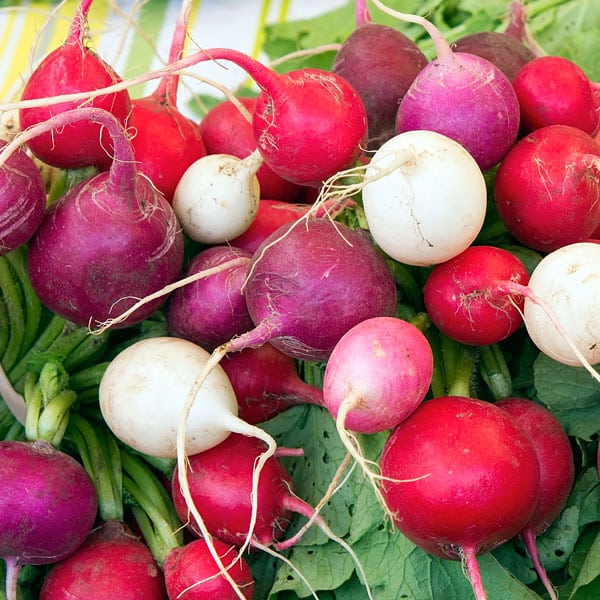
Yep…it’s officially winter. The ground is freezing, the air is freezing, and my toes are freezing. Bundle up along with me, and head out into the garden this month!
There are quite a few vegetables to plant in December that will continue to grow in the coldest weather. Some of them will be ready for you to harvest as early as January.
~~~~~~~~~~~~
Are you a brand new gardener? Not sure what to plant and how to plant it? I can help.
Check out my Ultimate Beginning Gardener Bundle and you’ll have a great garden in no time!
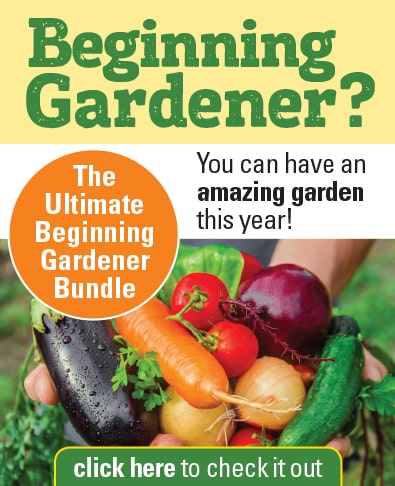
~~~~~~~~~~~~
This planting guide for Zone 9 will give you 8 vegetables you can plant in December for a great harvest. Let’s go!
8 Vegetables to Plant in December
Tender asparagus spears are one of the first vegetables to harvest in Spring. It's easy to grow asparagus in your garden, and it will produce for years and years.
Varieties: There are two types of asparagus: all-male varieties like Jersey Giant, Jersey Supreme and Jersey Knight; or male/female varieties like Mary Washington. The all-male types can produce more spears, but the male/female plants can potentially make seeds and multiply.
Planting: While you can grow asparagus from seed, it’s much easier to grow it from roots, called crowns. Learn everything you need to know about growing asparagus in your garden.
Recipe: I love to stir-fry asparagus with a bit of butter and brown sugar, or add it to Homemade Fried Rice.
Going out to the garden to pick a salad for dinner is the best! And, of course, the foundation for a delicious salad is great lettuce.
Varieties: Little Gem Romaine is a petite heirloom variety that has a crisp texture and nutty flavor.
Planting: Lettuce is a cool-weather crop, so plant it in a shady area. Plant your seedlings in December about 1 foot apart. Keep the soil moist and watch for garden pests, like snails and slugs. Learn more about growing romaine lettuce.
Recipe: When you've picked all the vegetables for your salad, top it off with some homemade croutons.
Radishes are a super easy crop to grow and are a great choice when gardening with kids.
Varieties: Radishes are not just red! I like Easter Egg Blend because you red, white, rose pink, purple, and bi-color (red top, white base) radishes all in the same seed packet.
Planting: In December, plant the seeds directly in the garden. They’ll grow quickly, and you can harvest your radishes when they’re the size of large marbles (in about a month).
Recipes: I love to eat radishes on my salads or just fresh from the garden. When they're small, they're less spicy.
You can plant fava beans as a cover crop, or as a food crop. The young beans are sweet and flavorful.
Varieties: Windsor favas are the best for eating, and Sweet Lorane Improved is used as a cover crop. Learn more about planting cover crops in your garden.
Planting: Start fava seeds directly in the garden in December; they'll sprout in about 10-15 days. To eat whole like a snap bean, harvest when young and pods are 2"–3" long; for fresh shelling beans, harvest when the pod shell turns green and the bean is a light green color; and for dry beans to store, harvest when shell turns hard and brown and seeds inside are dry.
Garlic is one of the easiest crops to grow, and it's one that never fails to give me a great harvest. Did you know that each garlic clove you plant grows into an entire head of garlic? That's great news for garlic lovers like me.
Varieties: There are two main types of garlic--softneck and hardneck. I grow softneck because it does best in our mild winters. Here's how to choose the best type of garlic for your garden.
Planting: Garlic does well in containers or directly in the soil. Just watch for weeds, since they don't like the competition. Learn how to grow garlic like a pro with these tips.
Recipes: If you somehow end up with more garlic than you can eat right away, it's easy to freeze for later use.
Bok Choi or Pak Choy is a delicious vegetable that's often overlooked by home gardeners. If you’ve ever tasted it at an Asian restaurant, you’ll definitely want to grow it in your garden.
Varieties: Toy Choy is a miniature variety that we enjoy. It grows well in the garden or in containers.
Planting: Plant seeds outside in December and you'll be harvesting heads with thick, white stems and glossy, dark green leaves in as little as 30 days.
Recipe: Wash carefully, chop, and stir fry with a bit of Black Bean Garlic Sauce. Yum!
Lots of folks make fun of kale because it’s in everything. Kale chips, kale smoothies, kale salad...the list goes on and on.
There’s a reason for this, though. One cup of kale contains more than your recommended daily value of vitamins K, A, and C. It also has lots of trace minerals, like copper, manganese, phosphorus, and selenium.
Varieties: I like Red Russian Kale, which you grow as a baby green. Cut the leaves after about 25 days and you’ll have tender, tasty kale. Then the plant will regrow for another harvest. Cool, right?
Planting: Set out kale plants in December and you’ll be harvesting your first crop of baby greens in January.
Recipe: I like to chop baby kale finely and sneak it into a salad, or add it to Homemade Fried Rice or Baked Italian Meatballs.
Mustard greens are new to my garden and palate, but I love trying new vegetables! These are so pretty, they could grow in the front yard and the neighbors would never be the wiser.
Varieties: You'll love this giant Red Mustard from my friends at Redwood Seeds. These huge, beautiful leaves with red and green coloring pack a spicy punch.
Planting: Red Mustard is slow to bolt in the spring, and is resistant to aphids and harlequin beetles. Plant in December and begin harvesting in late January.
Recipes: Their flavor is wasabi-like when eaten raw, but the spice diminishes when cooked--which makes these greens great for stir-fry or soups.
Want to know exactly what to plant each month?
Knowing which vegetables to plant in each growing season ensures your plants will thrive and give you a great harvest. Check out my Vegetable Garden Planting Schedules so you know exactly what to plant each month of the year.
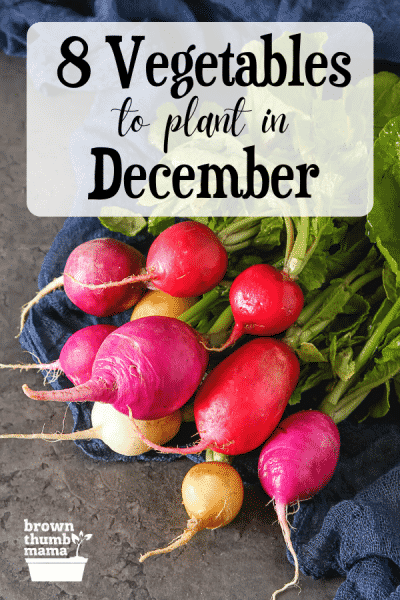
More of What to Plant This Month
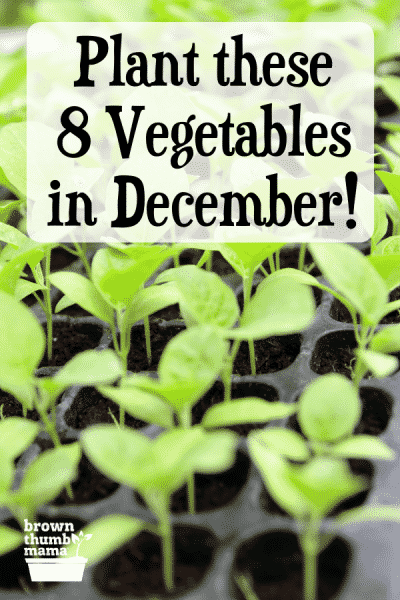

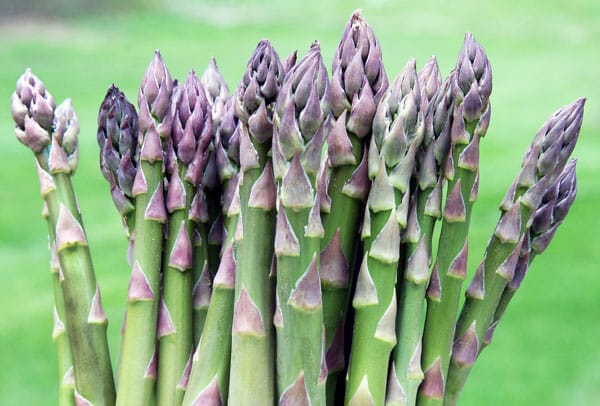
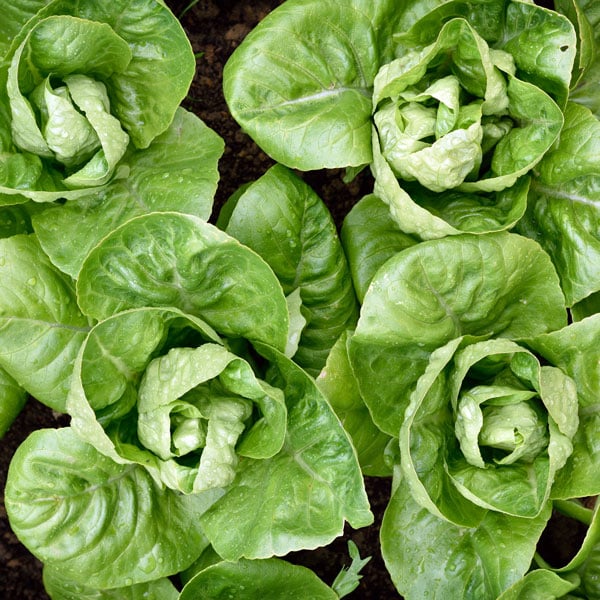
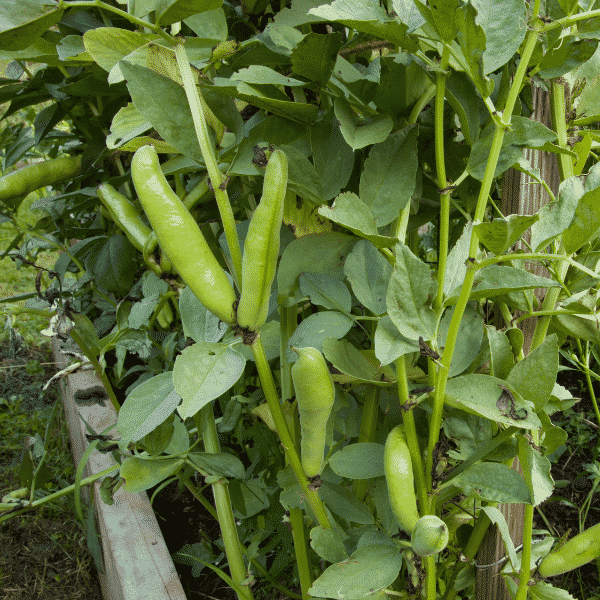
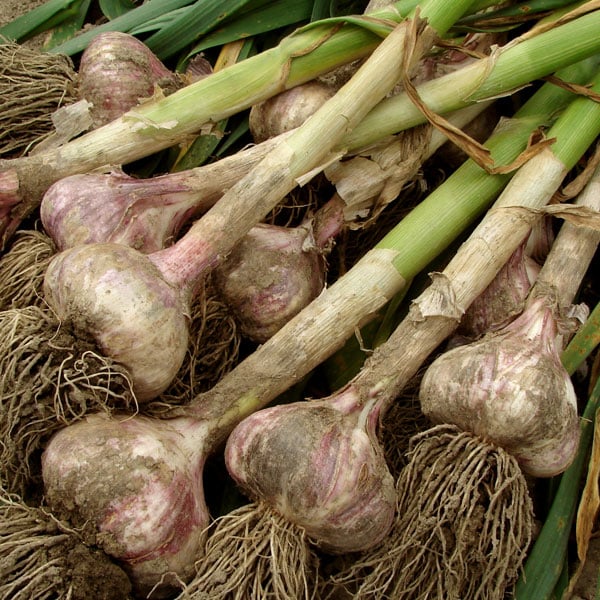
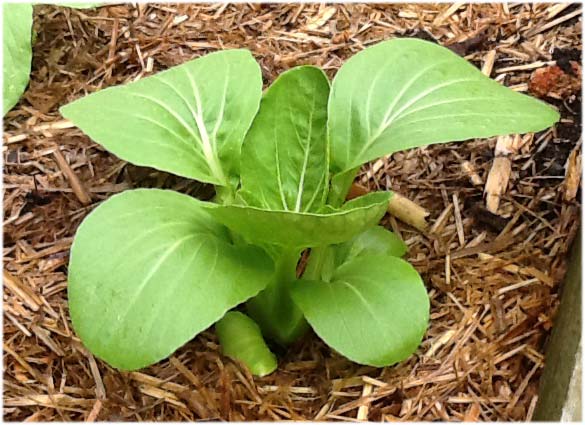
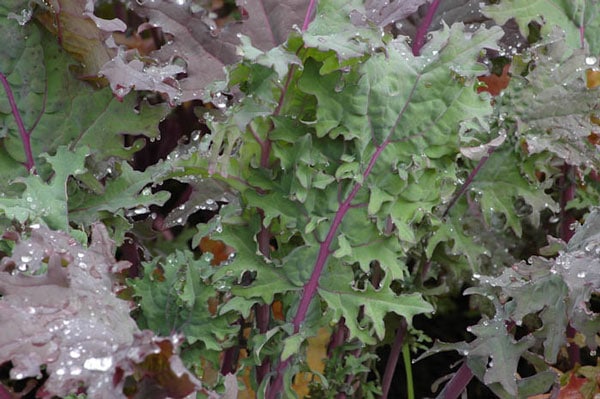
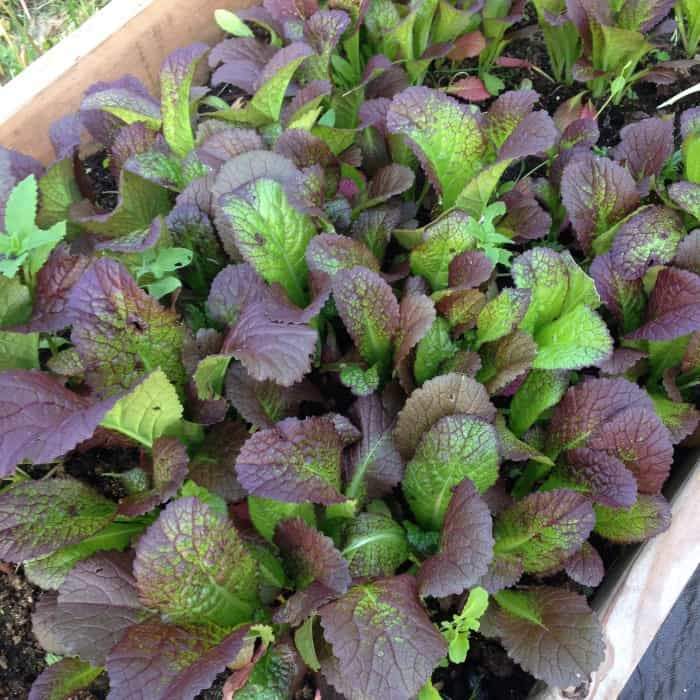

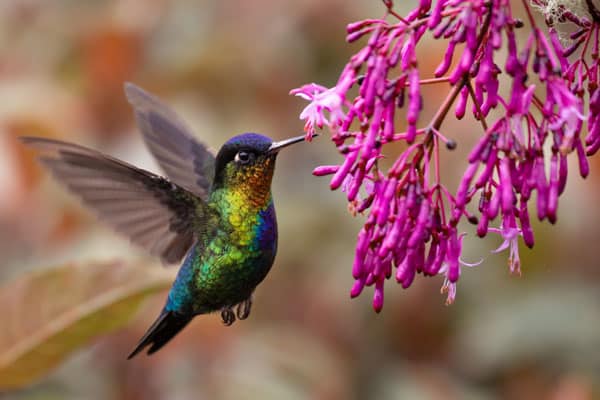

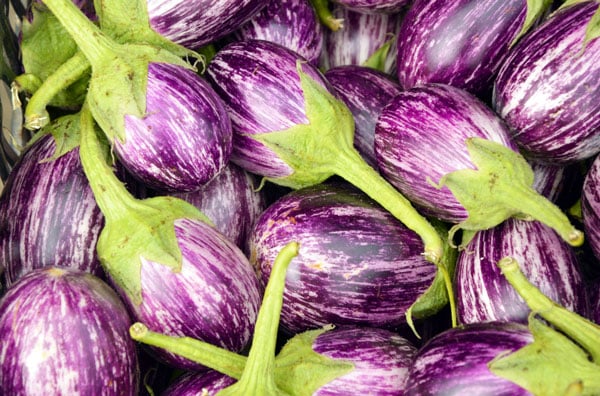
Thank you! I plant in containers so I will definitely plant the garlic. Can I try the rest in containers too? What zone is Kansas City, Kansas I want to encourage my grandchild to something this December.
This is so helpful. I am starting up my garden again this spring and needing some inspiration. We had a bunch of home projects we needed to finish up first like our new quartz countertop installation and a carpet cleaning. Now that those are all finished up and it’s warmer out I feel like I can finally get started!
If there’s two things I love, it’s bok choy and garlic. I had no idea I could plant them in my own garden even in the cold months. I mean, I did just get into gardening this last year. I put up a nice ornamental fence, created a couple of gardening boxes, and spent a lot of time planting, weeding, and harvesting this last summer and fall. I’m so glad I can continue my garden even in the winter. Thank you so much for sharing this. It literally made my whole day.
your ideas so interesting, I love to plant garden but I do not know much
Joe, I hope she replys. I liked your post!
Hi Pam: My name is Joe Bane, and I live in Northern Virginia. I am fortunate enough to have several large chunks of land that I tend for my wildlife and myself. For example, I have planted several large tracts of land (12 acres) with turnips and buckwheat for myself and my deer, bears and turkeys. It is amazing to see the health of the animals (and me) after just two years of additional food and forage.
Do you have any ideas about regenerating seeds that I can plant in December that will grow throughout the winter here? I’d like to plant something that I don’t have to replant every year if possible. I take frequent soils test to make sure the pH stays around 6.5 and I always hit my seeds with a little Nitrogen to get them started.